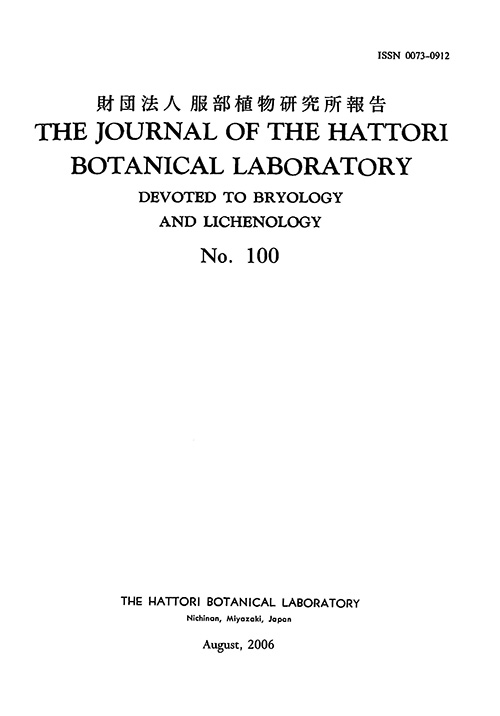Volume 97
Displaying 1-20 of 20 articles from this issue
- |<
- <
- 1
- >
- >|
-
2005 Volume 97 Pages 1-38
Published: January 25, 2005
Released on J-STAGE: September 19, 2018
Download PDF (16118K) -
2005 Volume 97 Pages 39-79
Published: January 25, 2005
Released on J-STAGE: September 19, 2018
Download PDF (20848K) -
2005 Volume 97 Pages 81-96
Published: January 25, 2005
Released on J-STAGE: September 19, 2018
Download PDF (6730K) -
2005 Volume 97 Pages 97-116
Published: January 25, 2005
Released on J-STAGE: September 19, 2018
Download PDF (6292K) -
2005 Volume 97 Pages 117-126
Published: January 25, 2005
Released on J-STAGE: September 19, 2018
Download PDF (3604K) -
2005 Volume 97 Pages 127-159
Published: January 25, 2005
Released on J-STAGE: September 19, 2018
Download PDF (13672K) -
2005 Volume 97 Pages 161-181
Published: January 25, 2005
Released on J-STAGE: September 19, 2018
Download PDF (7271K) -
2005 Volume 97 Pages 183-193
Published: January 25, 2005
Released on J-STAGE: September 19, 2018
Download PDF (4578K) -
2005 Volume 97 Pages 195-205
Published: January 25, 2005
Released on J-STAGE: September 19, 2018
Download PDF (4483K) -
2005 Volume 97 Pages 207-226
Published: January 25, 2005
Released on J-STAGE: September 19, 2018
Download PDF (8051K) -
2005 Volume 97 Pages 227-231
Published: January 25, 2005
Released on J-STAGE: September 19, 2018
Download PDF (2243K) -
2005 Volume 97 Pages 233-248
Published: January 25, 2005
Released on J-STAGE: September 19, 2018
Download PDF (7034K) -
2005 Volume 97 Pages 249-261
Published: January 25, 2005
Released on J-STAGE: September 19, 2018
Download PDF (4984K) -
2005 Volume 97 Pages 263-269
Published: January 25, 2005
Released on J-STAGE: September 19, 2018
Download PDF (3047K) -
2005 Volume 97 Pages 271-280
Published: January 25, 2005
Released on J-STAGE: September 19, 2018
Download PDF (3445K) -
2005 Volume 97 Pages 281-285
Published: January 25, 2005
Released on J-STAGE: September 19, 2018
Download PDF (2389K) -
2005 Volume 97 Pages 287-297
Published: January 25, 2005
Released on J-STAGE: September 19, 2018
Download PDF (4018K) -
2005 Volume 97 Pages 299-308
Published: January 25, 2005
Released on J-STAGE: September 19, 2018
Download PDF (4495K) -
2005 Volume 97 Pages 309-316
Published: January 25, 2005
Released on J-STAGE: September 19, 2018
Download PDF (3355K) -
2005 Volume 97 Pages 317-338
Published: January 25, 2005
Released on J-STAGE: September 19, 2018
Download PDF (9509K)
- |<
- <
- 1
- >
- >|
